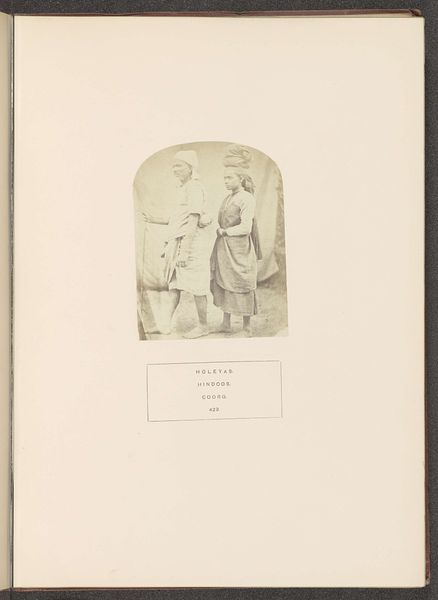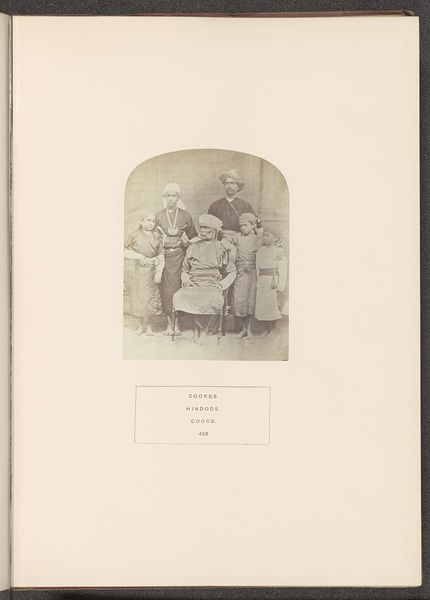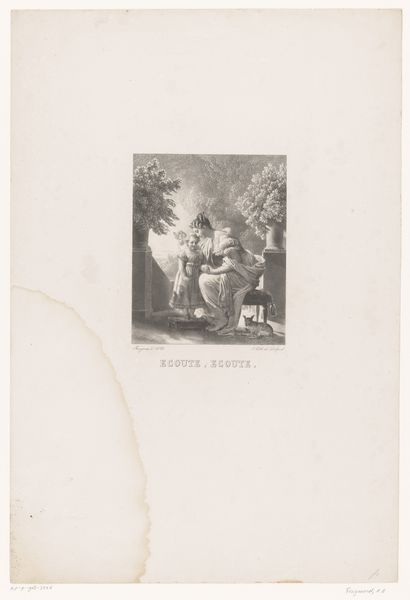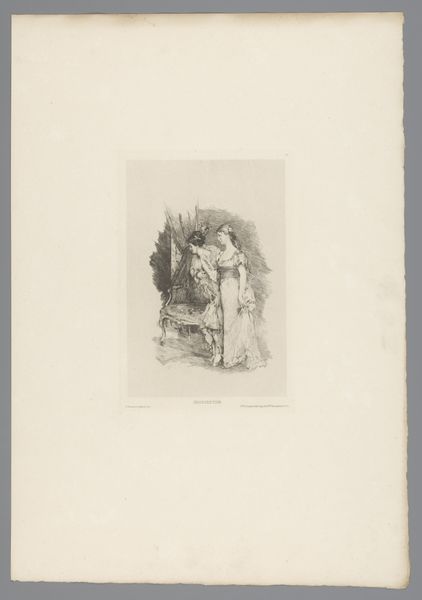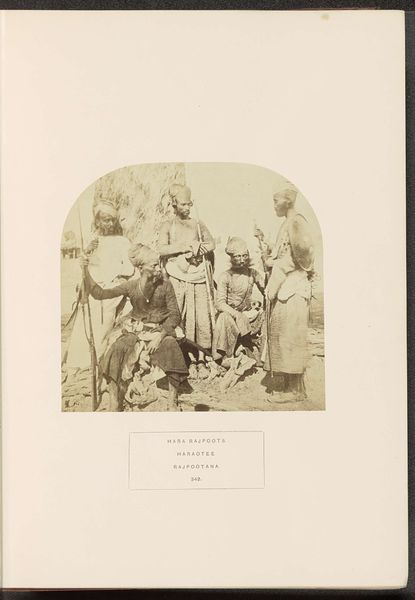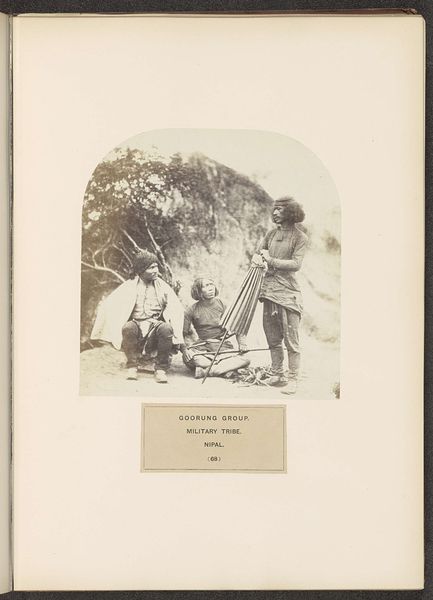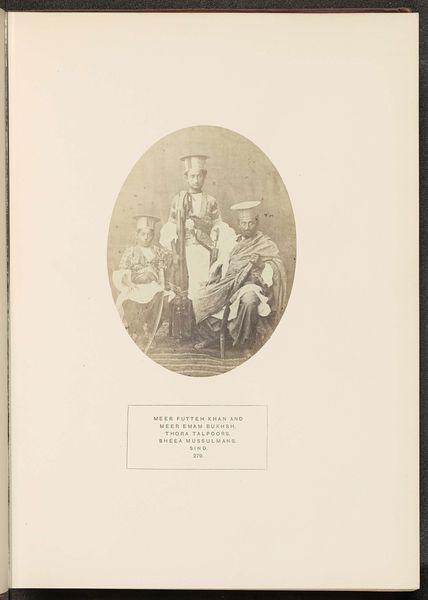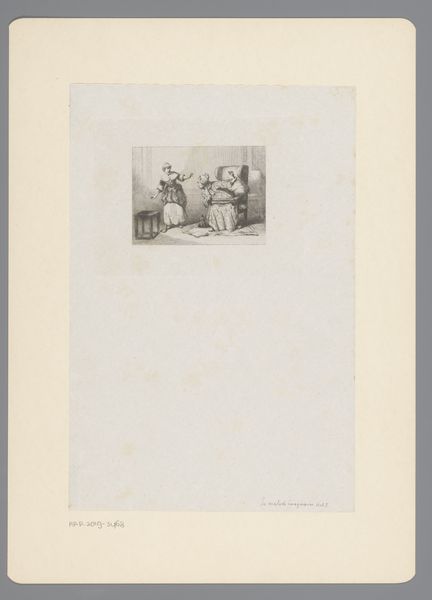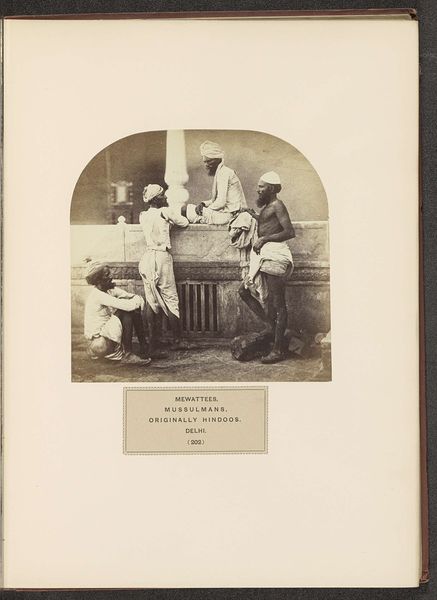
Drie Moormi mensen uit Nepal, in het midden een vrouw die hout draagt op haar rug before 1868
0:00
0:00
albumen-print, photography, albumen-print
#
albumen-print
#
portrait
#
asian-art
#
photography
#
albumen-print
Dimensions: height 146 mm, width 109 mm
Copyright: Rijks Museum: Open Domain
Curator: What strikes me immediately about this photograph is the quiet dignity in the faces of these individuals. There's a stillness that transcends the historical distance. Editor: Indeed. The work, "Drie Moormi mensen uit Nepal, in het midden een vrouw die hout draagt op haar rug," predates 1868, created by Benjamin Simpson, presents a compelling lens into the lives of the Moormi people in Nepal. Consider the material here, an albumen print; what processes of labor were used, how were these materials traded and obtained by Simpson, what were the social and historical circumstances of the photographer and subject's meeting, what does its circulation look like from then to now? Curator: And it does trigger a desire to connect—a visual portal of sorts. The woman carrying wood evokes a certain ancient resilience, you know? Like the weight of generations resting on her shoulders. Editor: That resonates. We're drawn to narratives of resilience. Yet, we must also interrogate our own gaze and the ethnographic project inherent in this photographic work. It prompts reflection on the power dynamics at play when documenting other cultures. Were these photos taken with consent or by force or colonial desires? The fact this piece is specifically printed in the Albumen method gives a sheen of material value to an object that also captured human lives. What is the artist's intention behind using Albumen instead of other photographic methods at the time? Curator: Of course, these are questions we should not ignore. But even aware of all those complexities, I'm still captivated by the intimacy of the composition, the way the figures seem to exist outside of time, connected through shared experiences and materials available to them. Editor: And, for me, that lingering disquiet and urge to contextualize makes this artwork all the more crucial. How was Nepal colonized in the making of the photo, by whom, and when are critical things that a work of art like this, when studied well, is a valuable historical and sociological primary document. Curator: Right, right. The act of observing prompts our own reflection, I think, ultimately opening up empathy. Editor: Absolutely, the artwork allows for critical dialogue. Curator: What a potent, complicated beauty then. Editor: A moment to linger on.
Comments
No comments
Be the first to comment and join the conversation on the ultimate creative platform.
